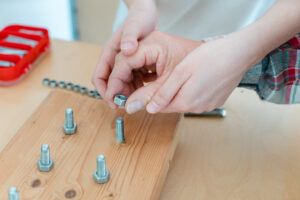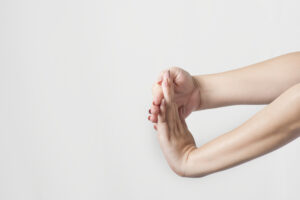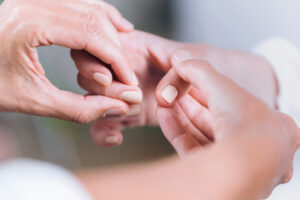It is never too late to start rehabilitation exercise following a stroke, yes, the earlier you start the better for you, but if it’s been years since your stroke and you have not been doing rehabilitation exercise you can still gain improvement in the effected limb.
Hand rehabilitation can be tough especially if you have spasticity, or your hand is flaccid, and you have no movement or control over the hand. Even if you have tried hand therapy in the past and you didn’t see the results you wanted, or you became demotivated because you put in the time and didn’t see the results, or recovery was too slow, still don’t give up!
My experience working on hand rehabilitation following a stroke, is that even after years of no movement in the effected hand, you should start a daily programme of hand exercises, repeating the same exercises daily, so you are repeating the demand you want the hand to do. If you are not sure what exercise to do get advice from a therapist. Always make sure you have medical clearance to exercise from your health care professional before you start your rehabilitation exercise programme. When doing your training it is important that you have a conversation with your hand, telling it what action you want it to do, but also imagine and see in your mind your hand doing the action you are asking it to do. I would also suggest to use the unaffected hand in your rehabilitation, do the movement with your unaffected hand first, then with your affected hand. This is called bi-lateral training which can be beneficial in stroke rehabilitation, as it involves using both sides of the brain for the movement, and this can help develop neuroplasticity.
Neuroplasticity are new pathways in the brain developing, helping to improve movement. To increase neuroplasticity, you need to do a task over and over again many repetitions, every day and for a considerable about of time, not just one minute here and there.
Your rehabilitation exercise needs to have structure, be goal orientated, and you should keep an exercise diary, so you know what you were doing when you first started your rehabilitation, where you are currently with your rehabilitation, this helps you to see the improvements you have made. This will motivate you and will help you see what works and doesn’t work for you.
It’s also a very good idea to write down your goals, short term, and long-term goals, this will help you to stay focused and motivated with your training.
When doing your hand rehabilitation exercise think about all the movements your unaffected hand can do, bend and extend fingers, pincher grip with your thumb and index finger, rotation of your hand outwards and inwards, flexion and extension of your wrist. You should work with these movements on your effected hand. And also make the rehabilitation exercises goal specific, and practice, practice, practice!
Exercises should be functional, opening and closing a door, turning a light switch on and off, holding your mobile phone, picking something up and putting it down again.
If you can choose an object which is important to you, has meaning to you, something that you use every day, glasses case, phone, toothbrush, anything that you have a connection with use it in your rehabilitation exercise, as it has a purpose in your daily life and is a good tool to use. Stretching is also very improrant for the muscles, and should be added into your daily routine.
Rehabilitation exercise is a journey which will take you somewhere new, but you must work at it, put in the time, the reps, and it’s got to be daily! You will see results, but it must be part of your daily routine for at least 30-60 minutes or longer.
Remember set yourself goals, visualise your hand doing the movement you want it to do, have a conversation with your hand tell it what movement you want it to do, keep a diary logging the improvements you have made.
It is possible to achieve your goal, so please practice practice practice…
.


